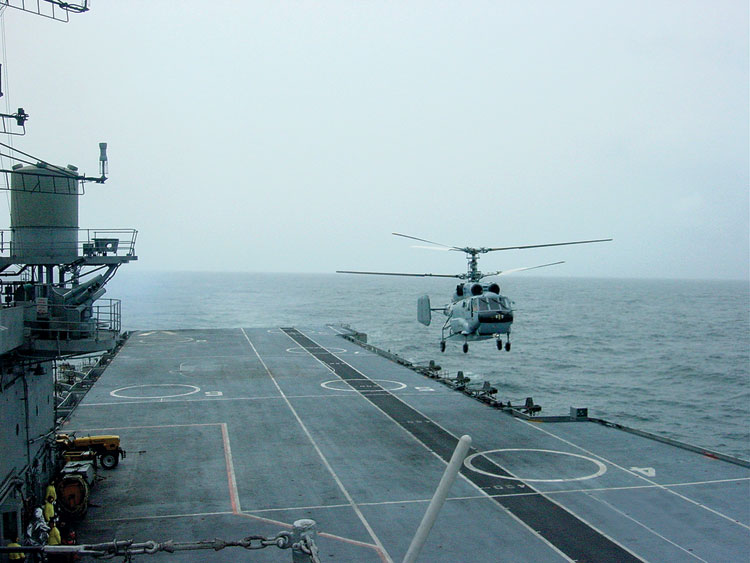Guest Column | Seriously Lacking
 Lt Gen. B.S. Pawar (retd)
Lt Gen. B.S. Pawar (retd)
Throughout most of the 20th century, India’s naval priorities were essentially focussed on containing Pakistan and securing the maritime approaches to Indian territorial waters – this kept India’s naval outlook confined to its own waters.
However, India’s economic growth since the Nineties, growing domestic interests and desire to be a major power finally led the navy to expand its outlook to the wider Indian Ocean Region (IOR) and today it is even looking at the Asia-Pacific, given the developments in that region, thus aspiring to be a truly blue water navy.
Accordingly, the navy’s long-term maritime capabilities perspective plan has identified a mix of two major roles for the force; one the traditional blue water capability and two to effectively counter threats closer to the coast. Considering the expanse of the Indian maritime area of interest in the IOR, providing maritime security by carrying out 24x7 Information, Surveillance and Reconnaissance (ISR) is an enormous task.
Hence, in this entire maritime strategy the navy’s Fleet Air Arm is expected to play a very significant role — in fact the centrepiece of navy’s modernisation scheme revolves around the acquisition of aircraft carriers along with state-of-the-art aircraft including helicopters and UAVs to operate from them to ensure 24x7 ISR in the Indian Ocean. While progress has been made in the acquisition of an aircraft carrier Vikramaditya and its associated platforms like the MiG-29K and state-of-the-art ISR platform like the P8I Long Range Maritime Reconnaissance - Anti Submarine Aircraft (MR ASW), there has been virtually no movement on the Helicopter front. The result is that the fourth largest navy in the world is operating majority of its warships without the critical component of helicopters on board, a major operational void.

The foundation of the Indian Navy’s Fleet Air arm was laid in 1953 with the induction of Sealand amphibians and commissioning of the first naval air station, INS Garuda, at Kochi on 11 May 1953. The first air squadron of Indian Navy – INAS 550 (Flying Fish), was established in June 1959 comprising Sealand Amphibians, Firefly Target Towing Aircraft and subsequently the HT2 Primary Trainers.
Fighters were first inducted in 1958 (Vampire Aircraft) as part of the Jet Training Flight at Sulur Air Force Station to train pilots for fighter flying operations and the first carrier borne fighter squadron INAS 300 (White Tigers) comprising Sea Hawk aircraft was commissioned on July 1960. This was followed by the raising of carrier-based anti-submarine warfare and reconnaissance squadron INAS 310 (Cobras) consisting of Alize aircraft in January 1961. This was also a very significant year for the naval air arm in view of the acquisition of India’s first aircraft carrier INS Vikrant, formerly HMS Hercules.
1
Vikrant’s initial air wing consisted of the British Hawker Sea Hawk fighter bombers and French Alize anti-submarine aircraft later replaced by Sea Harriers. The Search and Rescue flight for Vikrant was formed in 1964 with the induction of Chetak helicopters produced indigenously under licence by Hindustan Aeronautics Limited (HAL). Acknowledging the need to have at least one carrier available at all times, a second carrier INS Viraat (HMS Hermes) was acquired from the British Navy in 1987, thereby realising the Indian Navy’s vision of operating two Fleet Carriers. The Vikrant was decommissioned in 1997 and the Viraat in March this year with its integral Sea Harriers having been phased out earlier last year leaving the Indian Navy with the lone carrier, the Vikramaditya.
Present Status
Over the years, the naval air arm has grown from a modest force to a full-fledged operational arm with an inventory of approximately 180 aircraft of all types to include fighters, helicopters, maritime reconnaissance aircraft and UAVs with the capability to support the entire spectrum of maritime operations covering all dimensions of naval warfare. The navy’
Subscribe To Force
Fuel Fearless Journalism with Your Yearly Subscription
SUBSCRIBE NOW
We don’t tell you how to do your job…
But we put the environment in which you do your job in perspective, so that when you step out you do so with the complete picture.








